Description
Description: Chinese fine grain shagreen (sharkskin) snuff bottle with wood core. About shagreen, please read the Notes below.
Foot/base: Flat base
Mark:
Dating: 18th / 19th Century.
Material: Sharkskin covered wood.
Size: 51 mm high
Stopper: Pale agate with red glass finial and glass black collar, ivory spoon. Most bottles of this type has this same type of stopper, hence it must be considered original.
Provenance: Carlo Cottarelli collection. See provenance of ceramic bottle C2
References: See an identical bottle sold by Bonhams in the last image.
Notes: The penultimate picture is showing the wood body inside the neck.
Some excerpts from Wikipedia: Shagreen is a type of rawhide consisting of rough untanned skin of shark or ray; as such, it is also known as sharkskin. The word derives from the French chagrin and is related to Italian zigrino and Venetian sagrin. Shagreen has a rough and granular surface, particularly suitable for use in the hilts and scabbards of swords and daggers, where slipperiness is a disadvantage. The Japanese tachi, katana, and wakizashi swords had their hilts almost always covered in undyed rawhide shagreen, while in China, shagreen, whose use dates back to the 2nd century CE, was traditionally used on Qing dynasty composite bows. Typically, the ears and the spaces above and beneath the grip were covered by polished shagreen, in which the calcified papillae are reduced to equal height and form a uniform surface.
In Europe, in the 17th and early 18th centuries, the term “shagreen” began to be applied to leather made from sharkskin or the skin of a rayfish (probably the pearled ray, Hypolophus sephen). Such skins are naturally covered with round, closely set, calcified papillae called placoid scales, whose size is chiefly dependent on the age and size of the animal. These scales are ground down to give a roughened surface of rounded pale protrusions, between which the dye, typically a green vegetable dye, shows when the material is colored from the other side. This latter form of shagreen was first popularized in Europe by Jean-Claude Galluchat, a master leatherworker in the court of Louis XV of France. It quickly became a fashion amongst the French aristocracy, and migrated throughout Europe by the mid-18th century. “The appeal of shagreen in Europe was closely bound up with the way the translucent skin absorbs color, but in Japan, its whiteness was the measure of value”. Scholars concur that its popularity in Central Asia, where green footwear made of shagreen was popular into the 19th century, probably came as the result of its introduction from China perhaps during the 16th century’s rule of Suleiman the Magnificent. Three items made of shagreen can be found in the Topkapi collection.
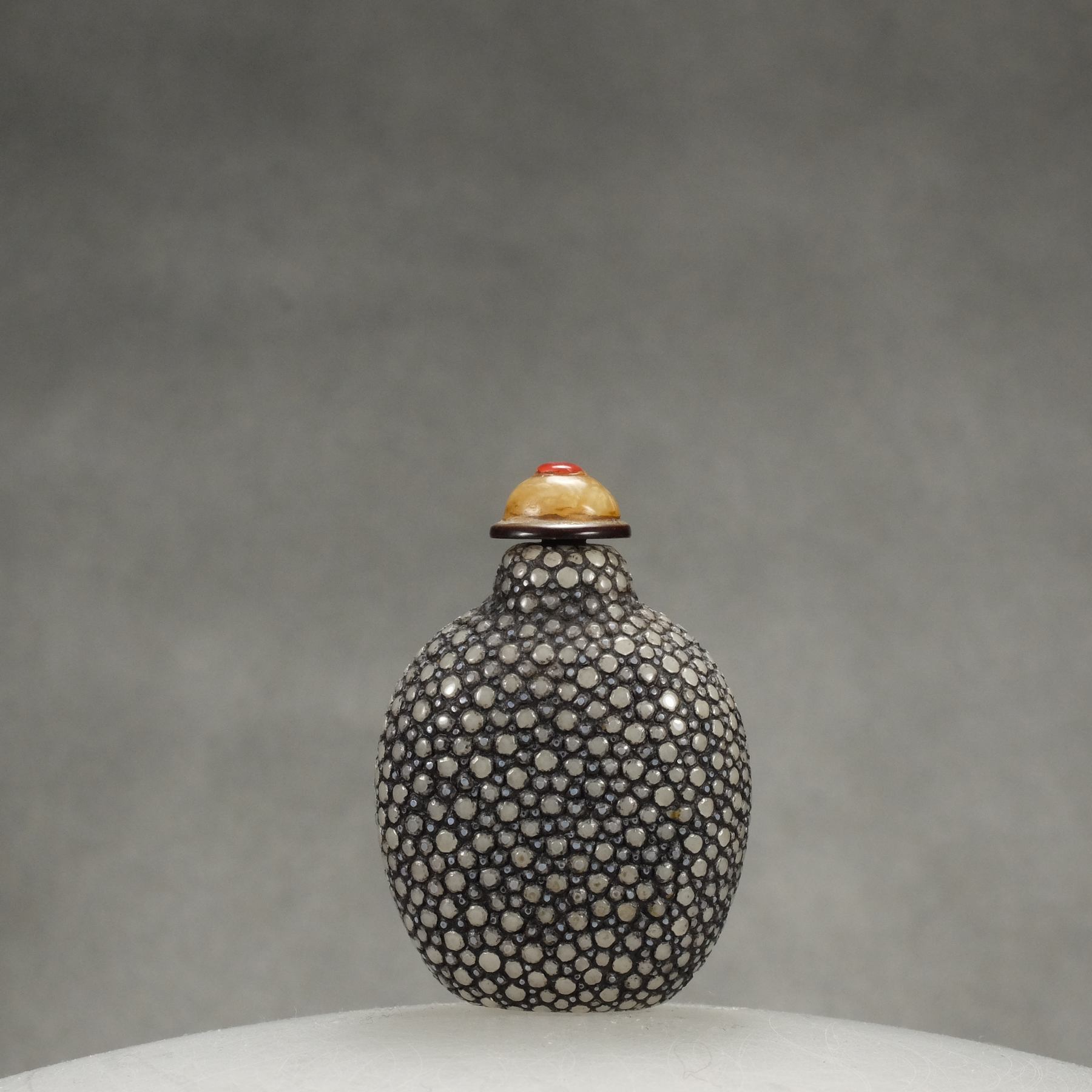
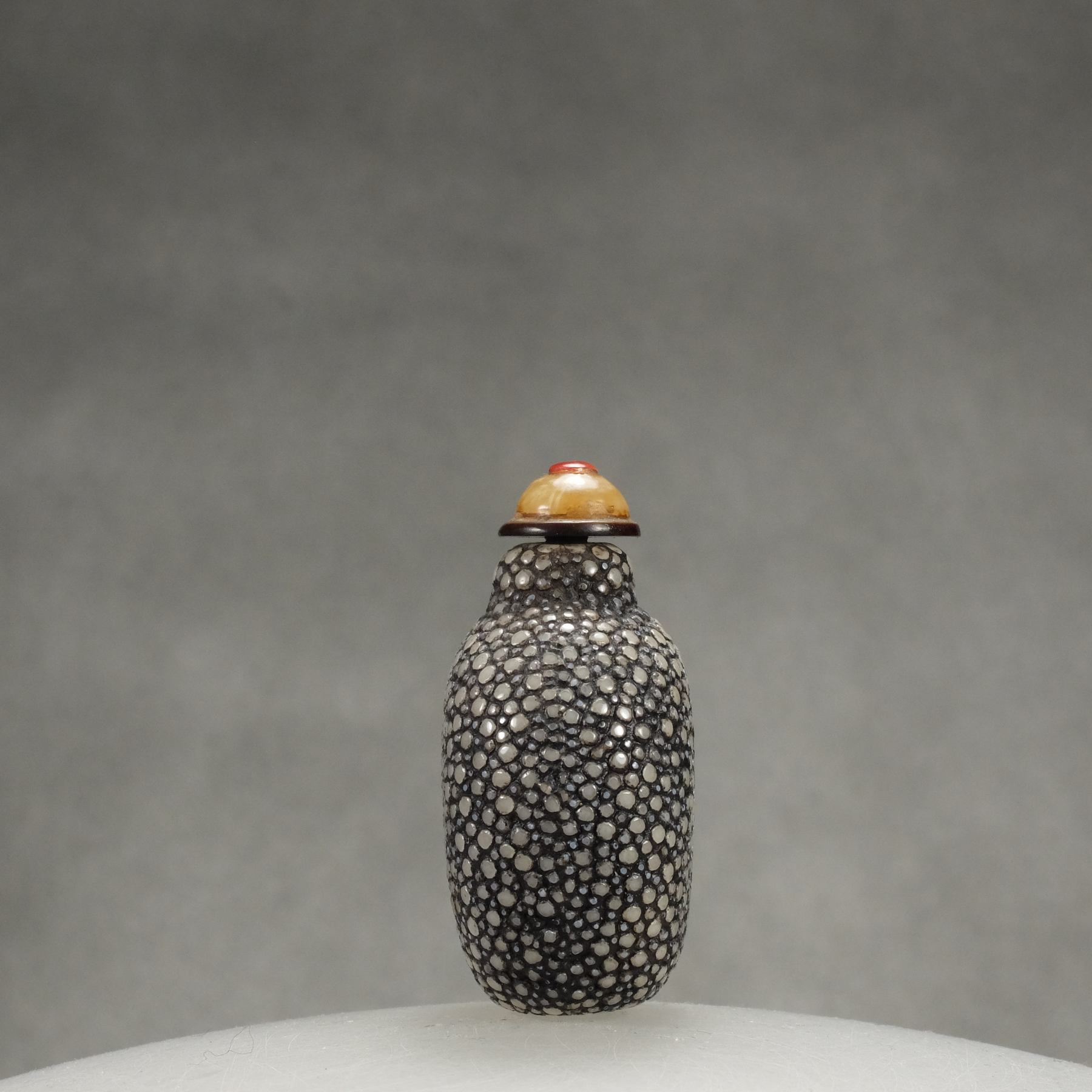
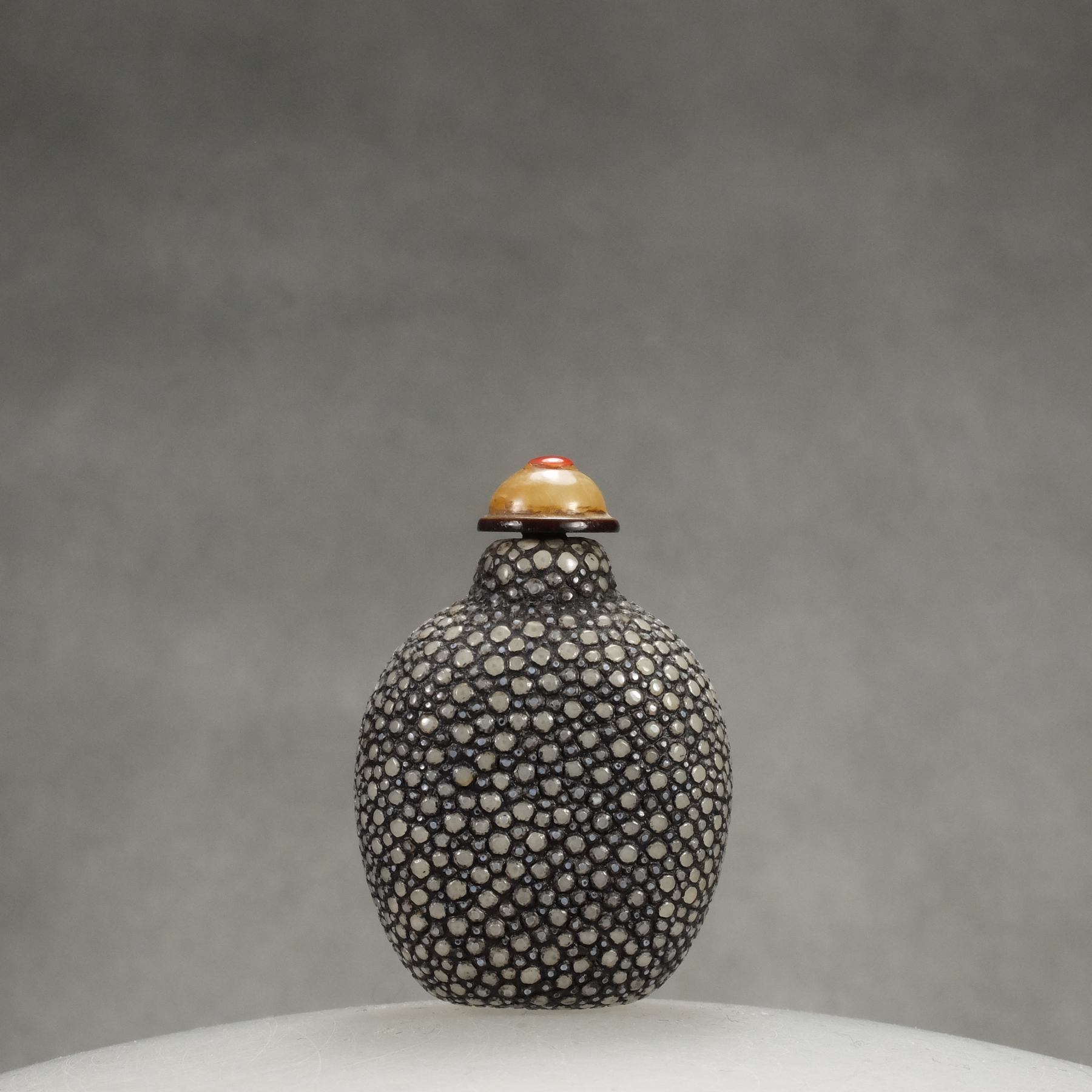
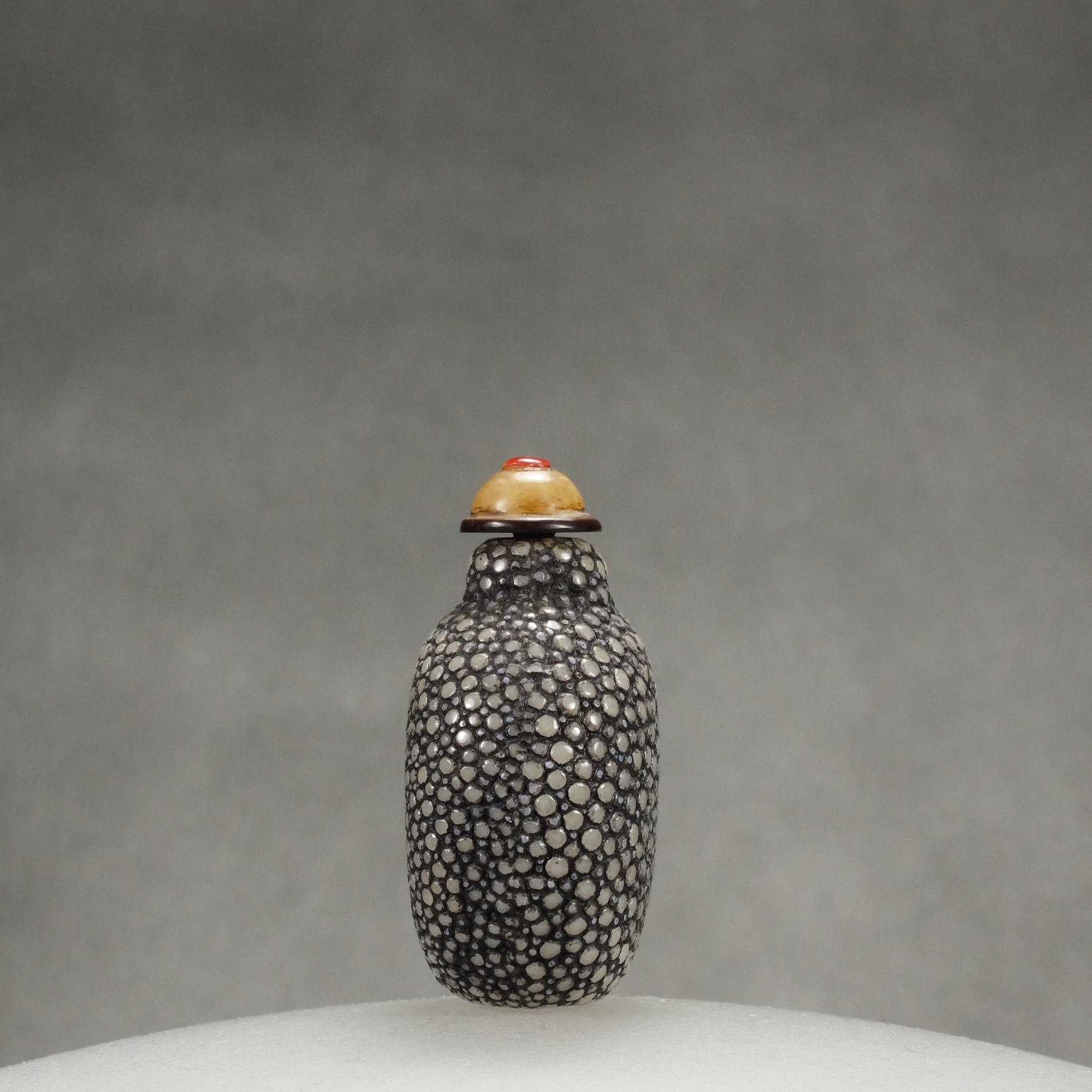
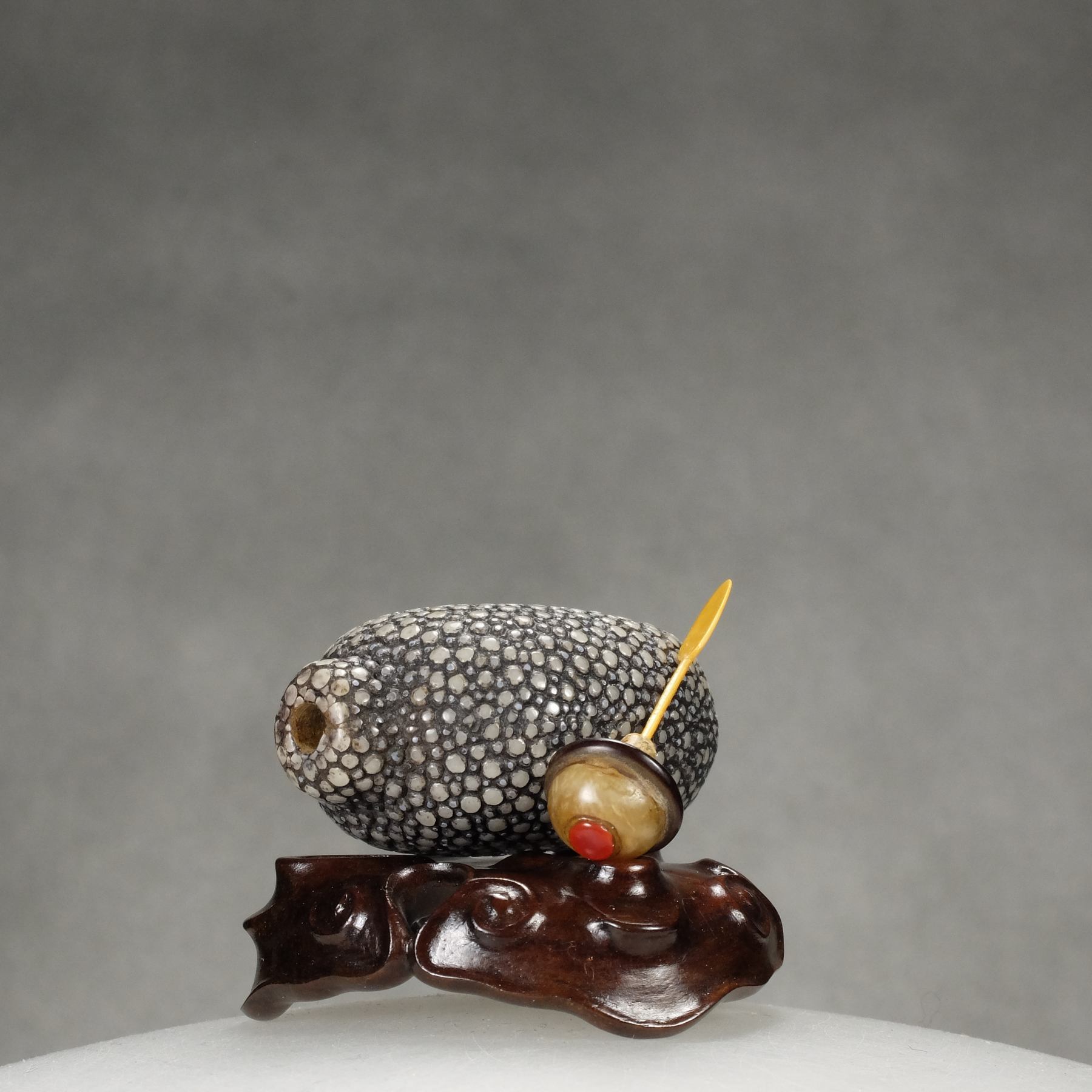
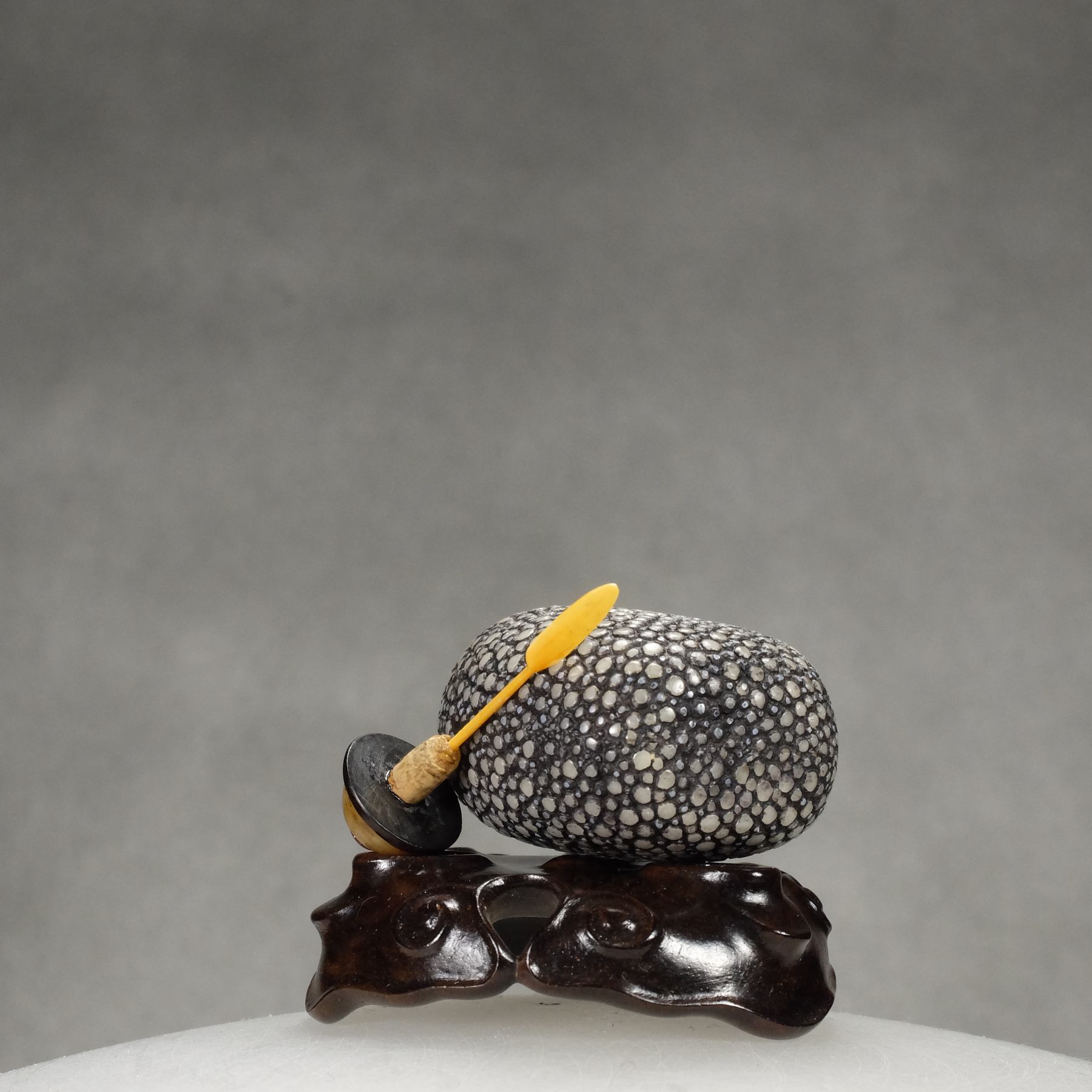

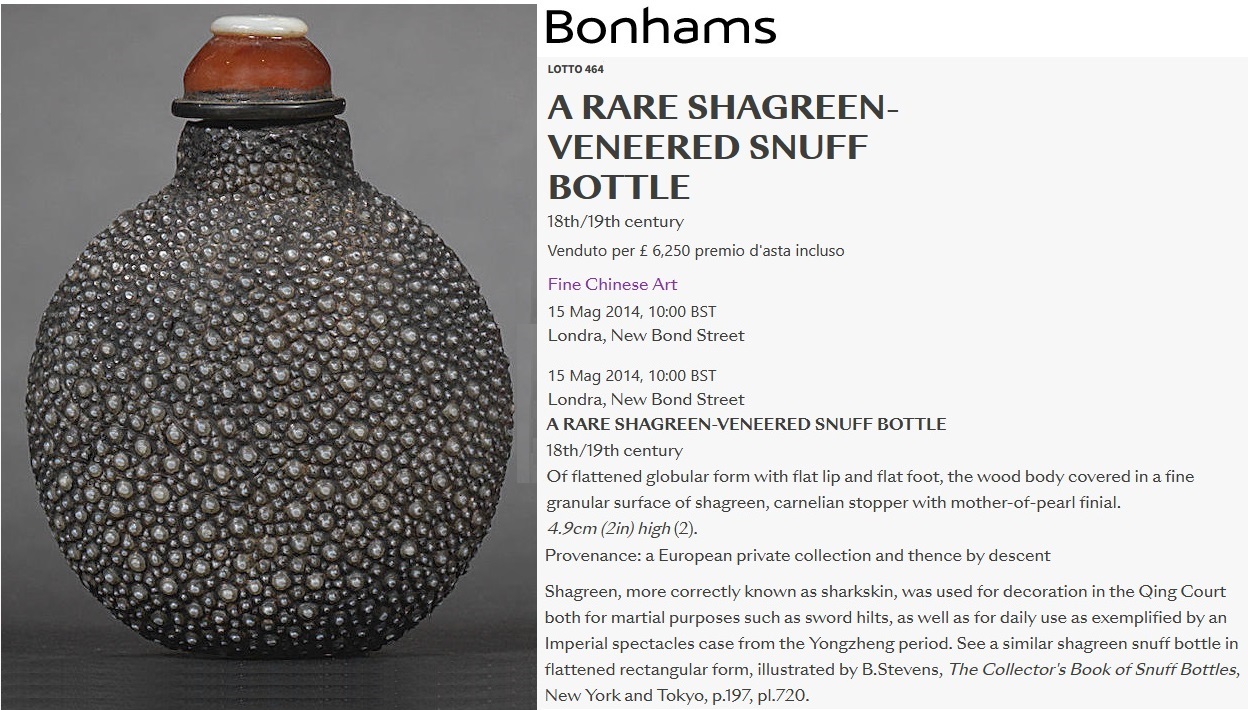
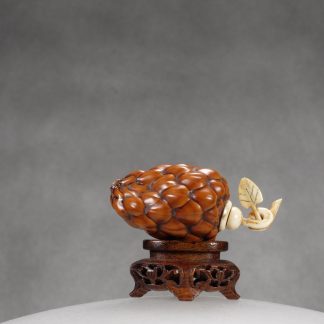
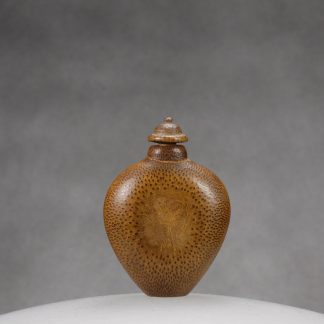

Reviews
There are no reviews yet.